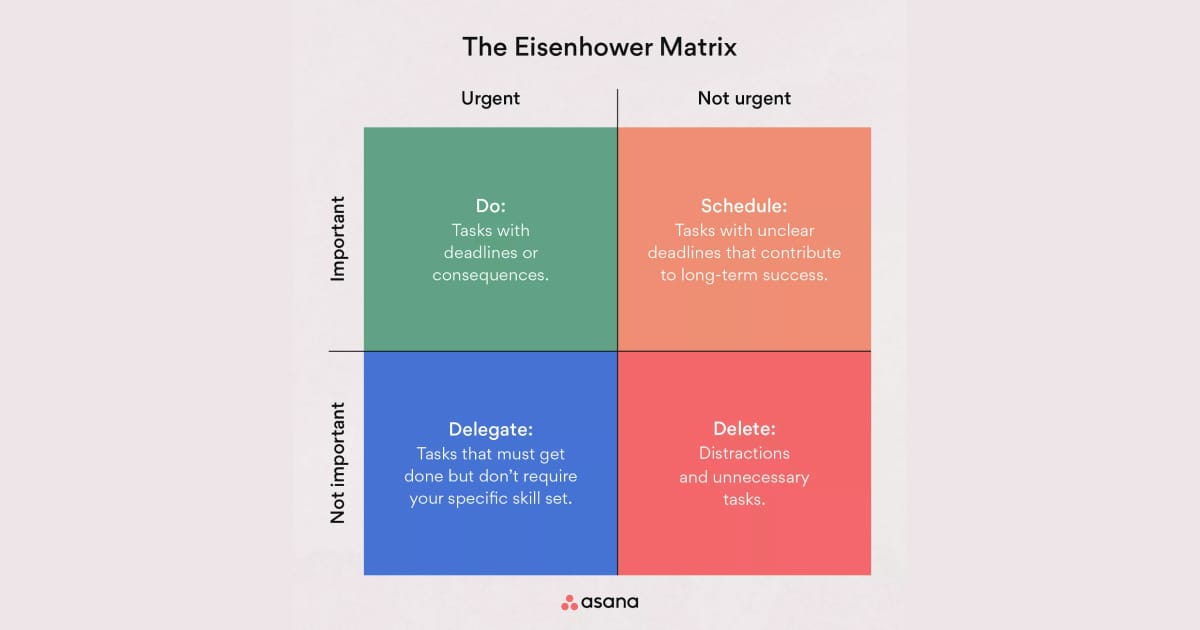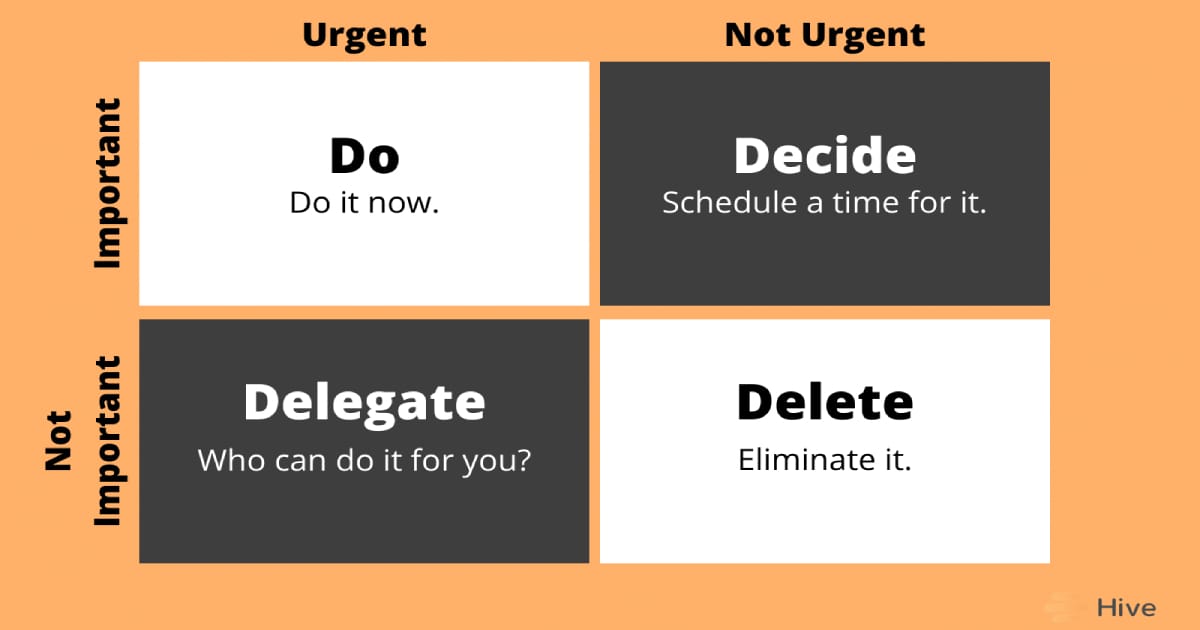Why The Eisenhower Matrix Matters In Business

In the fast-paced and dynamic world of business, effective time management and prioritization are essential skills for success. With numerous tasks, projects, and responsibilities vying for our attention, it becomes crucial to adopt a strategic approach to decision-making. One such invaluable tool for prioritization is the Eisenhower Matrix. Named after the 34th President of the United States, Dwight D. Eisenhower, this matrix provides a structured method for organizing tasks based on their urgency and importance.
In this article, we explore why the Eisenhower Matrix matters in business and how it can significantly enhance productivity.
Understanding the Eisenhower Matrix

The Eisenhower Matrix, often represented as a 2x2 grid, categorizes tasks into four quadrants based on their urgency and importance:
- Urgent and Important (Quadrant I): Tasks in this quadrant demand immediate attention and are crucial to the success of your business. They often involve critical deadlines, emergencies, or high-priority projects.
- Important, but Not Urgent (Quadrant II): These tasks are essential for long-term success, but may not have an immediate deadline. Quadrant II tasks include strategic planning, relationship building, and skill development.
- Urgent, but Not Important (Quadrant III): Tasks in this quadrant are time-sensitive but may not contribute significantly to your business's long-term goals. They often involve interruptions, some meetings, or minor issues that can be delegated.
- Not Urgent and Not Important (Quadrant IV): Tasks in this quadrant are neither time-sensitive nor crucial for your business. They may include time-wasting activities, distractions, or unnecessary meetings.
Why the Eisenhower Matrix Matters

- Strategic Decision-Making:
- The matrix provides a clear framework for making strategic decisions about task prioritization.
- It helps business leaders focus on high-impact activities that align with their long-term objectives.
- Enhanced Productivity:
- By systematically organizing tasks, the Eisenhower Matrix ensures that time and resources are allocated efficiently.
- It minimizes the risk of burnout by preventing the constant firefighting of urgent but non-important tasks.
- Proactive Planning:
- Quadrant II emphasizes the importance of proactive planning and investing time in activities that prevent crises from arising.
- This proactive approach reduces the frequency of urgent tasks in Quadrant I.
- Improved Time Management:
- The matrix encourages individuals to assess the true urgency and importance of tasks, aiding in effective time management.
- It assists in identifying tasks that can be delegated or eliminated to free up valuable time.
- Focus on Strategic Goals:
- Business leaders can align their daily activities with overarching strategic goals, ensuring a more coherent and purposeful approach to work.
- Reduced Stress and Overwhelm:
- Prioritizing tasks based on urgency and importance reduces the feeling of being overwhelmed by a constant stream of demands.
- Individuals can approach their work with a sense of control and confidence.
Final Thoughts
In the competitive landscape of modern business, mastering the art of prioritization is paramount. The Eisenhower Matrix serves as a powerful tool for business professionals to navigate the complexities of their roles, enabling them to focus on tasks that truly matter. By adopting this strategic approach, businesses can enhance productivity, reduce stress, and work towards achieving their long-term objectives in a more organized and efficient manner.
Embracing the principles of the Eisenhower Matrix is not just a time management strategy; it is a philosophy that can transform the way businesses operate and succeed in the long run.





